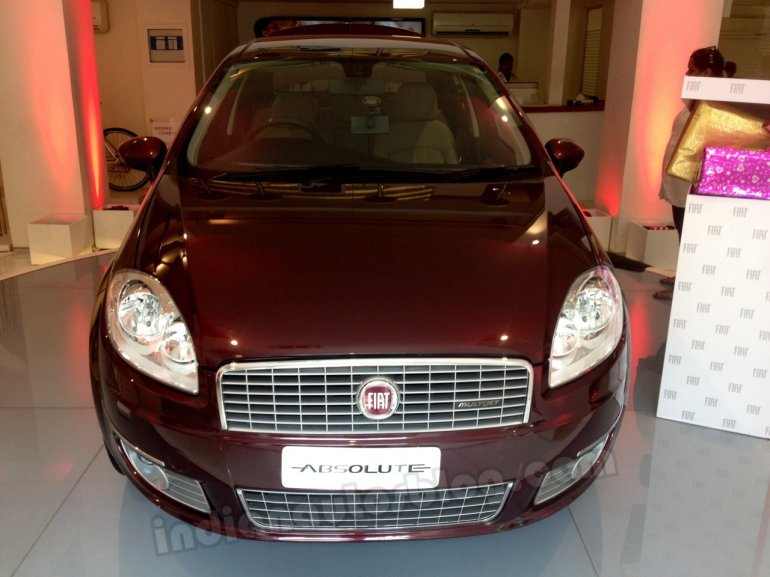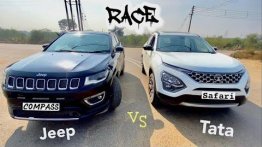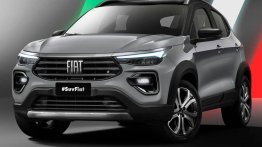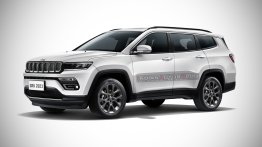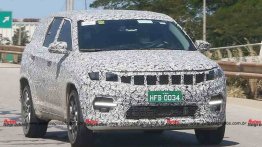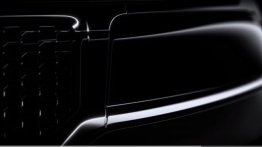On the sidelines of the Auto Shanghai 2013, we got an opportunity to interact with Mr. Mike Manley, President and CEO, Jeep Brand, Chrysler Group LLC and Chief Operating Officer (COO) for Asia Pacific (APAC), Head of Jeep Brand, GEC, Fiat S.p.A. The gentleman had answers for all our questions. So here you go!
Q: What roles are India and China playing in the development of the B and C SUV's announced by Jeep for India in 2015 and 2016?
A: Work on the products is progressing well. It’s in line with our new vehicle development program. Obviously we are focusing on one, not both of them at once. We are focusing on one, we get that moving and begin work on the second one… as we did with Cherokee, during the development of the Cherokee in the early stage we went out to our key markets, for instance clinic work in China, clinic work in Europe as well as in the US so that we can collect the influences for a global vehicle.
The B SUV, we will clinic the B SUV again in China, we have done in fact. It will also have an input form our team in India to make sure from a packaging perspective that its appropriate for the marketplace. I think that’s something that we have done increasingly even with the Grand Cherokee. We did quite a bit of work with Grand Cherokee to make sure its relevant for the key markets its going sell in.
As you know, in terms of B segment vehicles in China that segment is large and growing strongly, and in India its a very important segment, B plus it would be for us, so the influence of those markets in the development of that product is important. Now will it change the overall styling of the product, maybe in minor ways, in the same ways we would for example change certain styling cues to the exterior for a particular market. That would certainly have inputs in terms of the interiors and the way the things are packaged.
Q: Have you studied the sub-four meter rule for the B segment SUV?
A: For sure, the sub-four meter rule is very important for us but it may not be necessarily something that gets targeted in terms of our styling because it may not suit the vehicle in question and I think with certain brands you have to be true to the brand. But obviously it’s such a big break, as is the displacement that you can’t not be aware of it.
Q: Could you tell something more about the ‘Linea Classic‘?
If you look at a number of competitors when they introduce a new model, they make a number of modifications to the old model and keep that alive in the marketplace because what they can do is make sure that from a cost perspective its well targeted.
So I think we have a clear strategy in terms of what our Classic will look like and as we get closer (to the launch) I will give a lot more details. In terms of the development of the new vehicles (Punto and Linea) they are driven by a market so the very beginning of the project for the new Punto and Linea, our market really determines what they are looking for and they do that based upon vehicle attributes to begin with.
Those vehicle attributes are then translated into a vehicle. What platform, what weight, what performance, what styling, that answer to the market questions then goes back to the market and they can assess what they are looking for. That process, if you like, has continued evolving in the market, and is absolutely what is important for us in terms of replacement products. I would say they are very involved.
Now, obviously I also have a large engineering constituency in India as well. And for us to use that resource, and we are using it increasingly whether it is on these projects or other projects, is very important because there are a huge number of engineers in Chennai and we got a good engineering division in Ranjangaon, even though it obviously can’t produce a full vehicle. They have skills and talents that we use where it is appropriate. They are involved in the definition of the vehicle and in the styling approval of the vehicle.
Q. Would you consider the upcoming Fiat 500X and Fiat 500 XL (stretched 500L with seats for seven occupants) for the Indian market considering these segments are touted to grow robustly in the coming years?
We would consider bringing them to India…we are clear in terms of products. We were prepared to announce those on which we have already made the decision that they would come to India. The question was why wouldn’t I consider other products. I would consider bringing any product from our stable as long as the brand is already in India. Whether we do or not, we will have to wait and see.
Q: The Viaggio, launched last year, has done very well in China. Are there any plans to launch another Viaggio model to capture more of the market?
The plant (in Changsha) will launch the next model towards the end of this year/early next year. We are pretty close even though it’s still a few months off in terms of the vehicle getting ready for the start of production. We are well on track with that. That vehicle will be announced during the Guangzhou Auto Show.
Q: Will you be more periodic with your lifecycle activities on your future products?
Well I think if you look at the success of Chrysler since we were restructured, a lot of that success was more frequent interventions on existing vehicles, minor refreshes, facelifts and major overhauls. That for me is a very important part of product lifecycle management.
The Grand Cherokee (refurbished visually and mechanically after being on the market for just 2.5 years) is an example. In some markets the cycle of intervention is shorter and in other markets it can be slightly longer, appropriate to what’s happening in the marketplace. But in general am a big advocate of maintaining the relevance of a product in the marketplace and that needs to be done by continually working on the product management so that the lifecycle of the vehicle cannot just die as it did…I mean that totally answers your question and I have a strong belief in lifecycle management.

